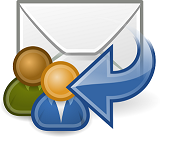 One of the biggest mistakes for any follow-up email is not including a strong call-to-action. Leaving the email open-ended with phrases like “let me know what you think” or “keep in touch” aren’t a strong enough incentive for your client to respond. You’re more likely to get a response when you ask pointed questions like “What day and time works best for you next week to discuss this further?” or “Based on the deadline that you mentioned, you’ll need to start our service by the end of this month—do you have 30 minutes to sit down and chat later this week?”
One of the biggest mistakes for any follow-up email is not including a strong call-to-action. Leaving the email open-ended with phrases like “let me know what you think” or “keep in touch” aren’t a strong enough incentive for your client to respond. You’re more likely to get a response when you ask pointed questions like “What day and time works best for you next week to discuss this further?” or “Based on the deadline that you mentioned, you’ll need to start our service by the end of this month—do you have 30 minutes to sit down and chat later this week?”
- Stuart Leung, "No One Likes the 'Just Following Up' Email"
We've all received and sent tons of follow-up emails, and it doesn't look like the practice is going to disappear any time soon, as a back-and-forth email exchange occurs in so many areas: customer service, sales, even social interactions. So while the above quote was written with sales in mind, it clearly applies across the board to all of our emails where a response is required. So make it easier on the person reading your email and give them something clear to respond to. A direct question (which ends in a question mark) will always be more likely to be responded to than an implied one (no question mark) because the question mark itself visually cries out, "respond!"

